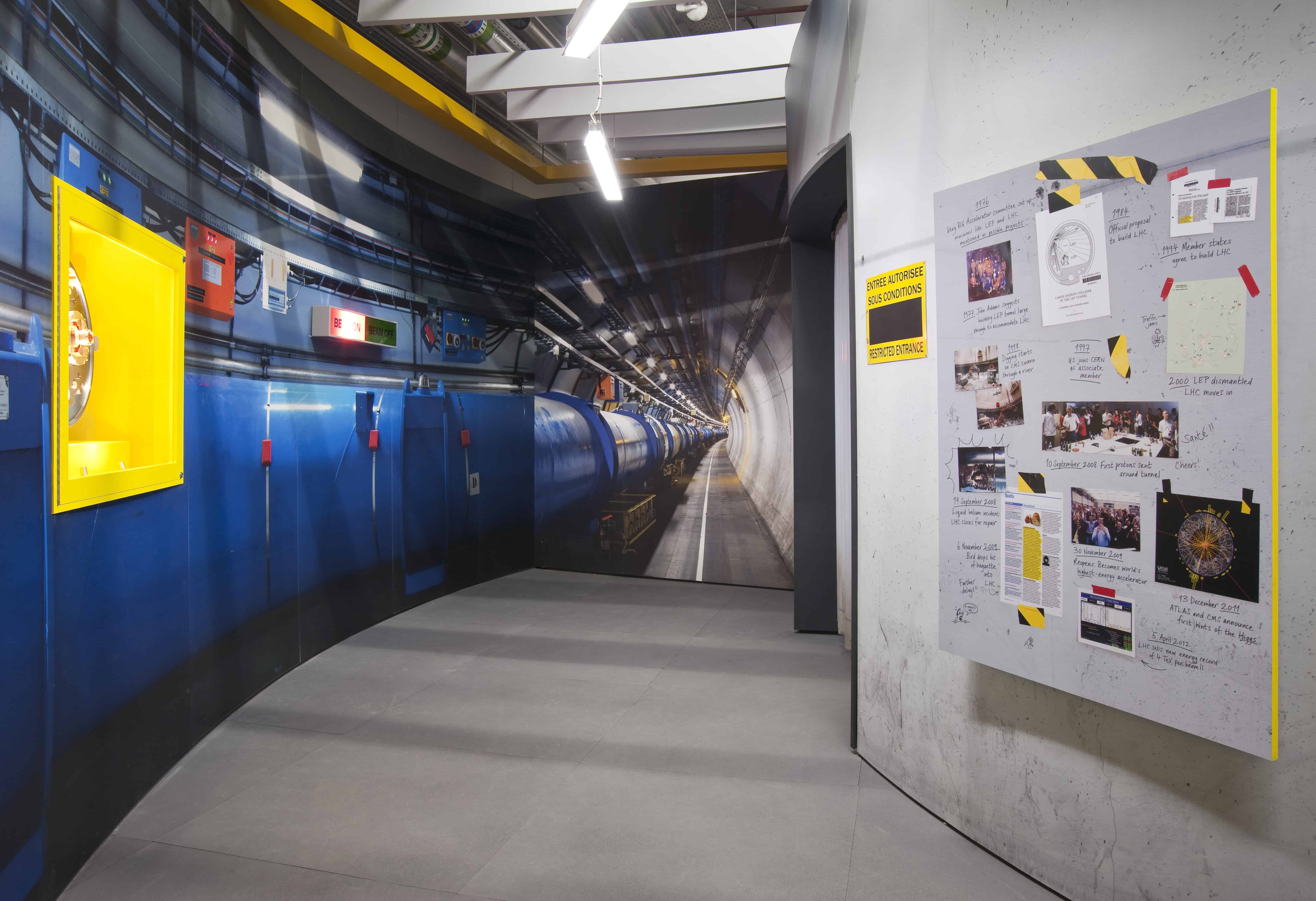
By Matin Durrani and Tushna Commissariat
If you’re in the tiny minority of people whose job title says “particle physicist”, chances are you’ll have been to CERN at least once in your career to help build a detector, analyse some collision data or muse in the cafeteria over supersymmetry (or the apparent lack of it so far). But for the rest of the world, going to the Geneva lab is simply not on the agenda, which is one reason why the Science Museum in London has this week unveiled a big new exhibition devoted to CERN’s Large Hadron Collider. Entitled simply Collider, the exhibition “blends theatre, video and sound art with real artefacts from CERN” that will, say organizers, “recreate a visit to the famous particle-physics laboratory”.
If you can’t make it to London either, then the video below from the Science Museum will give you a taste of what you can see and why the exhibition was set up. Actually, Physics World features in the exhibition too. If you look carefully at the image above, you’ll see a mock notice board attached to a wall of the collider tunnel on the right, with an article from the December 2009 issue of the magazine about the occasion when a mysterious piece of baguette temporarily stopped the machine from working. (Look even closer and you’ll see on the same page a short item about the time we thought we saw Ringo Starr in a water droplet – but that’s another story altogether.)
Elsewhere on the Web this week, we came across an interesting article on Nature News talking about influential researchers in science and arts and how to compare them. The article looked at Scholarometer – a new tool developed by researchers at Indiana University Bloomington in the US, which compares h-index metrics across disciplines, while trying to keep citation biases that arise in each filed to a minimum. Scholarometer is free to use and download, so do take a look at it.
Talking about influential scientists, we came across this rather touching post on the Letters of Note blog that reproduces two recommendation letters written for one Mr Einstein by two other stalwarts of science – Henri Poincaré and Marie Curie. Both Poincaré and Curie praise Einstein and his genius and appeal to their colleagues at ETH Zurich (Einstein’s alma mater to which he wanted to return as a professor) to have faith in him in spite of his youth. “If we consider that Mr Einstein is still very young, we are right to have great hope in him, and to see him as one of the leading theoreticians of the future,” says Curie in her letter.
Another interesting thing we spotted is this Physics arXiv blog post about a molecular interferometry paper recently published in the Physical Chemistry Chemical Physics journal. Markus Arndt and his group at University of Vienna in Austria observed the wave-like behaviour of giant molecules that were made up of over 800 atoms, breaking their own record of molecular interference experiments from earlier – take a look at previous research of theirs that we covered where they carried out molecular interference experiments using a diatom as a grating! The current work also caught the attention of physicist and blogger Chad Orzel who has written about exactly why the work is impressive.
And for some light weekend reading, take a look at this Scientific American blog post on what happens to Google Maps when tectonic plates move and this Symmetry Magazine article on how particle physics technology is helping to create life-saving medical technologies and treatments. And when you’ve finished reading all of the above, bake yourself an edible particle-detector cake as a treat.



